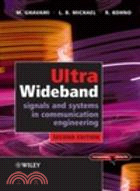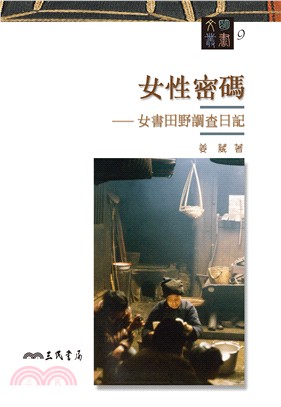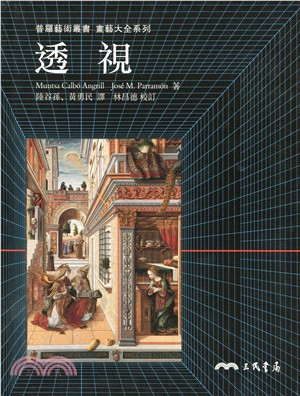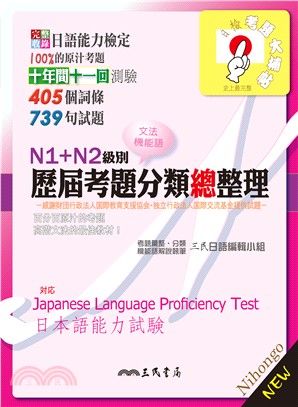Ultra Wideband Signals And Systems In Communication Engineering 2E +Website
商品資訊
ISBN13:9780470027639
出版社:John Wiley & Sons Inc
作者:Ghavami
出版日:2007/01/12
裝訂/頁數:精裝/344頁
規格:25cm*17cm (高/寬)
定價
:NT$ 5204 元優惠價
:90 折 4684 元
若需訂購本書,請電洽客服 02-25006600[分機130、131]。
商品簡介
作者簡介
名人/編輯推薦
目次
相關商品
商品簡介
The thoroughly revised and updated second edition of Ultra Wideband Signals and Systems in Communication Engineering features new standards, developments and applications. It addresses not only recent developments in UWB communication systems, but also related IEEE standards such as IEEE 802.15 wireless personal area network (WPAN). Examples and problems are included in each chapter to aid understanding.
Enhanced with new chapters and several sections including Standardization, advanced topics in UWB Communications and more applications, this book is essential reading for senior undergraduates and postgraduate students interested in studying UWB. The emphasis on UWB development for commercial consumer communications products means that any communication engineer or manager cannot afford to be without it!
New material included in the second edition:
Two new chapters covering new regulatory issues for UWB systems and new systems such as ad-hoc and sensor networks, MAC protocols and space-time coding for UWB systems
IEEE proposals for channel models and their specifications
Interference and coexistence of UWB with other systems
UWB antennas and arrays, and new types of antennas for UWB systems such as printed bow-tie antennas
Coverage of new companies working on UWB such as Artimi and UBISense
UWB potential for use in medicine, including cardiology, respiratory medicine, obstetrics and gynaecology, emergency room and acute care, assistance for disabled people, and throat and vocals
Companion website features a solutions manual, Matlab programs and electronic versions of all figures.
Enhanced with new chapters and several sections including Standardization, advanced topics in UWB Communications and more applications, this book is essential reading for senior undergraduates and postgraduate students interested in studying UWB. The emphasis on UWB development for commercial consumer communications products means that any communication engineer or manager cannot afford to be without it!
New material included in the second edition:
Two new chapters covering new regulatory issues for UWB systems and new systems such as ad-hoc and sensor networks, MAC protocols and space-time coding for UWB systems
IEEE proposals for channel models and their specifications
Interference and coexistence of UWB with other systems
UWB antennas and arrays, and new types of antennas for UWB systems such as printed bow-tie antennas
Coverage of new companies working on UWB such as Artimi and UBISense
UWB potential for use in medicine, including cardiology, respiratory medicine, obstetrics and gynaecology, emergency room and acute care, assistance for disabled people, and throat and vocals
Companion website features a solutions manual, Matlab programs and electronic versions of all figures.
作者簡介
Mohammad Ghavami is Reader at the Centre for Telecommunications Research, King's College London. From 1998 to 2000 he was a JSPS Postdoctoral fellow in Yokohama National University, Japan, and from 2000 to 2002 he was a researcher at the Sony Computer Science Laboratories, Inc. in Tokyo, Japan.
Lachlan Michael is based at Hattori Information Processing Laboratory, Sony, Inc. and was previously Associate Researcher at Sony Corporation, Tokyo.
Ryuji Kohno is Visiting Researcher at the Fundamental Research Lab, Sony CSL and a Professor at the Yokohama National University, Yokohama, Japan. He was previouslyDirector of the Advanced Telecommunication Laboratory, Sony Coroporation, Tokyo.
Lachlan Michael is based at Hattori Information Processing Laboratory, Sony, Inc. and was previously Associate Researcher at Sony Corporation, Tokyo.
Ryuji Kohno is Visiting Researcher at the Fundamental Research Lab, Sony CSL and a Professor at the Yokohama National University, Yokohama, Japan. He was previouslyDirector of the Advanced Telecommunication Laboratory, Sony Coroporation, Tokyo.
名人/編輯推薦
"Ultra Wideband Signals and Systems in Communication Engineering is a well-developed, introductory book on UWB technologies and applications, which is a strong resource for both beginners who seek to introduction to UWB principles and their applications, and for researchers who wish to better understand the application of UWB technologies to practical systems." (IEEE Signal Processing Magazine, September 2008)
"Well-developed, introductory book on UWB technologies and applications, which is a strong resource for both beginners who seek an introduction to UWB principles and their applications, and for researchers who wish to better understand the application of UWB technologies to practical systems." (IEEE Signal Magazine, September 2008)
"Well-developed, introductory book on UWB technologies and applications, which is a strong resource for both beginners who seek an introduction to UWB principles and their applications, and for researchers who wish to better understand the application of UWB technologies to practical systems." (IEEE Signal Magazine, September 2008)
目次
Preface.
Acknowledgments.
List of Figures.
List of Tables.
Introduction.
I.1 Ultra wideband overview.
I.2 A note on terminology.
I.3 Historical development of UWB.
I.4 UWB regulation overview.
I.5 Key benefits of UWB.
I.6 UWB and Shannon’s theory.
I.7 Challenges for UWB.
I.8 Summary.
1 Basic properties of UWB signals and systems.
1.1 Introduction.
1.2 Power spectral density.
1.3 Pulse shape.
1.4 Pulse trains.
1.5 Spectral masks.
1.6 Multipath.
1.7 Penetration characteristics.
1.8 Spatial and spectral capacities.
1.9 Speed of data transmission.
1.10 Cost.
1.11 Size.
1.12 Power consumption.
1.13 Summary.
2 Generation of UWB waveforms.
2.1 Introduction.
2.2 Gaussian waveforms.
2.3 Designing waveforms for specific spectral masks.
2.4 Practical constraints and effects of imperfections.
2.5 Summary.
3 Signal-processing techniques for UWB systems.
3.1 The effects of a lossy medium on a UWB transmitted signal.
3.2 Time domain analysis.
3.3 Frequency domain techniques.
3.4 UWB signal-processing issues and algorithms.
3.5 Detection and amplification.
3.6 Summary.
4 UWB channel modeling.
4.1 A simplified UWB multipath channel model.
4.2 Path loss model.
4.3 Two-ray UWB propagation model.
4.4 Frequency domain autoregressive model.
4.5 IEEE proposals for UWB channel models.
4.6 Summary.
5 UWB communications.
5.1 Introduction.
5.2 UWB modulation methods.
5.3 Other modulation methods.
5.4 Pulse trains.
5.5 UWB transmitter.
5.6 UWB receiver.
5.7 Multiple access techniques in UWB.
5.8 Capacity of UWB systems.
5.9 Comparison of UWB with other wideband communication systems.
5.10 Interference and coexistence of UWB with other systems.
5.11 Summary.
6 Advanced UWB pulse generation.
6.1 Hermite pulses.
6.2 Orthogonal prolate spheroidal wave functions.
6.3 Wavelet packets in UWB PSM.
6.4 Summary.
7 UWB antennas and arrays.
7.1 Antenna fundamentals.
7.2 Antenna radiation for UWB signals.
7.3 Suitability of conventional antennas for the UWB system.
7.4 Impulse antennas.
7.5 Beamforming for UWB signals.
7.6 Radar UWB array systems.
7.7 Summary.
8 Position and location with UWB signals.
8.1 Wireless positioning and location.
8.2 GPS techniques.
8.3 Positioning techniques.
8.4 Time resolution issues.
8.5 UWB positioning and communications.
8.6 Summary.
9 Applications using UWB systems.
9.1 Military applications.
9.2 Commercial applications.
9.3 UWB potentials in medicine.
9.4 Summary.
10 UWB communication standards.
10.1 UWB standardization in wireless personal area networks.
10.2 DS-UWB proposal.
10.3 MB-OFDM UWB proposal.
10.4 A short comment on the term ‘impulse radio’.
10.5 Summary.
11 Advanced topics in UWB communication systems.
11.1 UWB ad-hoc networks.
11.2 UWB sensor networks.
11.3 Multiple inputs multiple outputs and space-time coding for UWB systems.
11.4 Self-interference in high-data-rate UWB communications.
11.5 Coexistence of DS-UWB with Wi-Max.
11.6 Vehicular radars in the 22–29 GHz band.
11.7 Summary.
References.
Index.
Acknowledgments.
List of Figures.
List of Tables.
Introduction.
I.1 Ultra wideband overview.
I.2 A note on terminology.
I.3 Historical development of UWB.
I.4 UWB regulation overview.
I.5 Key benefits of UWB.
I.6 UWB and Shannon’s theory.
I.7 Challenges for UWB.
I.8 Summary.
1 Basic properties of UWB signals and systems.
1.1 Introduction.
1.2 Power spectral density.
1.3 Pulse shape.
1.4 Pulse trains.
1.5 Spectral masks.
1.6 Multipath.
1.7 Penetration characteristics.
1.8 Spatial and spectral capacities.
1.9 Speed of data transmission.
1.10 Cost.
1.11 Size.
1.12 Power consumption.
1.13 Summary.
2 Generation of UWB waveforms.
2.1 Introduction.
2.2 Gaussian waveforms.
2.3 Designing waveforms for specific spectral masks.
2.4 Practical constraints and effects of imperfections.
2.5 Summary.
3 Signal-processing techniques for UWB systems.
3.1 The effects of a lossy medium on a UWB transmitted signal.
3.2 Time domain analysis.
3.3 Frequency domain techniques.
3.4 UWB signal-processing issues and algorithms.
3.5 Detection and amplification.
3.6 Summary.
4 UWB channel modeling.
4.1 A simplified UWB multipath channel model.
4.2 Path loss model.
4.3 Two-ray UWB propagation model.
4.4 Frequency domain autoregressive model.
4.5 IEEE proposals for UWB channel models.
4.6 Summary.
5 UWB communications.
5.1 Introduction.
5.2 UWB modulation methods.
5.3 Other modulation methods.
5.4 Pulse trains.
5.5 UWB transmitter.
5.6 UWB receiver.
5.7 Multiple access techniques in UWB.
5.8 Capacity of UWB systems.
5.9 Comparison of UWB with other wideband communication systems.
5.10 Interference and coexistence of UWB with other systems.
5.11 Summary.
6 Advanced UWB pulse generation.
6.1 Hermite pulses.
6.2 Orthogonal prolate spheroidal wave functions.
6.3 Wavelet packets in UWB PSM.
6.4 Summary.
7 UWB antennas and arrays.
7.1 Antenna fundamentals.
7.2 Antenna radiation for UWB signals.
7.3 Suitability of conventional antennas for the UWB system.
7.4 Impulse antennas.
7.5 Beamforming for UWB signals.
7.6 Radar UWB array systems.
7.7 Summary.
8 Position and location with UWB signals.
8.1 Wireless positioning and location.
8.2 GPS techniques.
8.3 Positioning techniques.
8.4 Time resolution issues.
8.5 UWB positioning and communications.
8.6 Summary.
9 Applications using UWB systems.
9.1 Military applications.
9.2 Commercial applications.
9.3 UWB potentials in medicine.
9.4 Summary.
10 UWB communication standards.
10.1 UWB standardization in wireless personal area networks.
10.2 DS-UWB proposal.
10.3 MB-OFDM UWB proposal.
10.4 A short comment on the term ‘impulse radio’.
10.5 Summary.
11 Advanced topics in UWB communication systems.
11.1 UWB ad-hoc networks.
11.2 UWB sensor networks.
11.3 Multiple inputs multiple outputs and space-time coding for UWB systems.
11.4 Self-interference in high-data-rate UWB communications.
11.5 Coexistence of DS-UWB with Wi-Max.
11.6 Vehicular radars in the 22–29 GHz band.
11.7 Summary.
References.
Index.
主題書展
更多
主題書展
更多書展今日66折
您曾經瀏覽過的商品
購物須知
外文書商品之書封,為出版社提供之樣本。實際出貨商品,以出版社所提供之現有版本為主。部份書籍,因出版社供應狀況特殊,匯率將依實際狀況做調整。
無庫存之商品,在您完成訂單程序之後,將以空運的方式為你下單調貨。為了縮短等待的時間,建議您將外文書與其他商品分開下單,以獲得最快的取貨速度,平均調貨時間為1~2個月。
為了保護您的權益,「三民網路書店」提供會員七日商品鑑賞期(收到商品為起始日)。
若要辦理退貨,請在商品鑑賞期內寄回,且商品必須是全新狀態與完整包裝(商品、附件、發票、隨貨贈品等)否則恕不接受退貨。
























